Roberto Sastre, a Spaniard from Madrid, is a well-educated individual who has taken on the significant challenge of walking and hitchhiking around the world with his two dogs for the last eight years. After backpacking Ukraine in 2010, Roberto realized he had found his inherent passion; he returned to University to complete his studies. Three years later, after completing his master’s degree, he decided to travel internationally full-time.
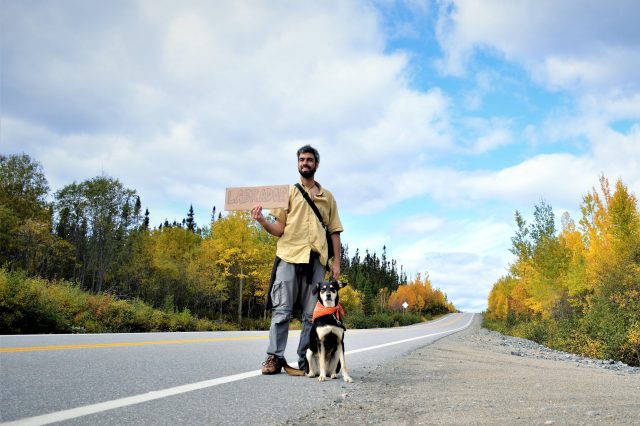
Roberto loves connecting with new cultures and centers his travels around discovering towns and villages in the mountains, jungles, and deserts, far from the beaten path. His style of travel is self-deemed as “hippie,” and he will hitch a ride on any mode of transport, including boats and trains. Roberto’s charismatic personality is a natural magnet for those he meets during his travels, and this has regularly opened many doors for him and his dogs. We can imagine the amount of trust it takes to put your life and your pets’ lives in a stranger’s hands. I believe Roberto has a remarkable ability to weed out the bad from the good and has not yet found himself in a dangerous situation. Despite the dangers and the fact that it is risky for most adventurers, Roberto still believes that walking/hitchhiking is the best way to discover that the world is full of good people willing to help. The question of why Roberto walks and hitchhikes came up in our conversation, and the answer is simple: hitchhiking is pure adventure, further motivated by the standard and near-universal ban of dogs on public transport and, to be honest, for economic reasons.
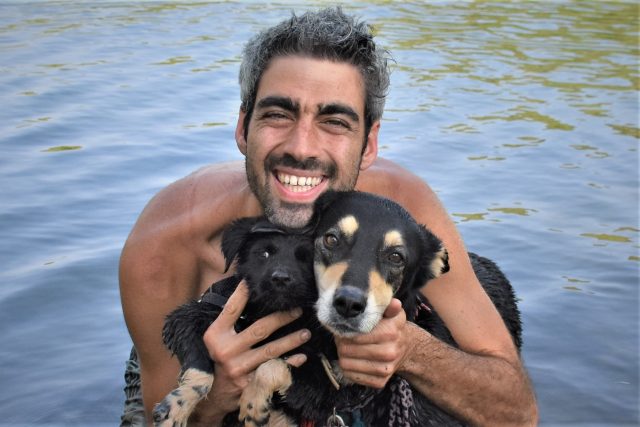
Roberto has found that his favorite continents, Latin America, Asia, and Africa, have the widest variety of cultures, and, of course, they are generally cheaper for the more budget-conscientious traveler. Just as everybody had been affected by the pandemic, Roberto was caught off guard in India while trying to complete his Canine Beijing Express trip from Spain to China by land. Unfortunately, he has had to return to Spain but will continue the journey once borders are open and countries are safe to travel through.
In continuation of our series of interviews with overlanders who travel with pets, read here about how Roberto manages to stay safe, sane, and calm amidst the rewarding but challenging means of travel and growth he has devoted his life to.
Tell us about yourself
I am walking and hitchhiking across the planet with my furry companions, Cocai and Chai. I was born in Madrid, Spain, and studied to be a biologist and a psychologist before embarking on my trip around the world. I have three hobbies: animals (specifically, monkeys and dogs), traveling, and writing. As I travel, I write about my traveling experience with my two dogs to encourage other people to launch into canine adventure, learn about dog cultures in different countries, and advocate for animal rights and awareness.
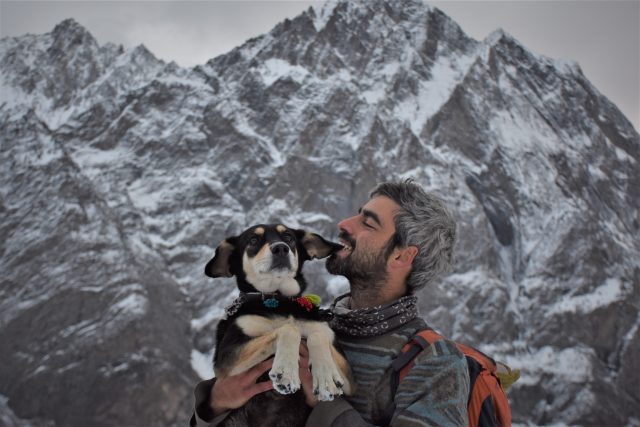
How did you begin traveling, and when did you decide that the overland lifestyle would be a large part of your future?
I have loved traveling ever since my parents took me camping when I was a young child back in the 1990s. In 2010, I decided to go backpacking to Ukraine during the mid-terms of my biology major. That summer, I discovered the difficulties and the adrenaline of traveling and my ability to immerse myself in a foreign culture quickly.
In 2013, I was granted a scholarship to complete my master’s degree in Brazil, and I jumped at the opportunity, as it was a great way to fulfill my childhood dream of touring South America. I toured South America for 15 months, and during this time, I adopted my first dog, Cocai.
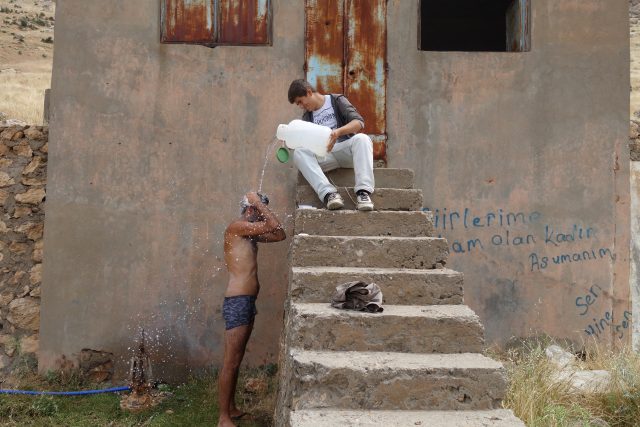
Once I completed my travels in South America, I spent a year and a half in North America (Mexico, USA, and Canada) and almost three years in Asia, discovering countries like Turkey, Georgia, Armenia, Iran, Pakistan, and India.
What motivates and inspires you to travel?
The motivation behind my project, Viajeros Perrunos (which directly translates in English to Dog Travelers), is to assist, educate, and empower other individuals to travel with a pet.
As I travel through different countries, I try to visit, support, and volunteer at as many animal shelters as possible to try and raise awareness of the plight of many of these animals and the shelters that try their best to support and care for homeless and abandoned animals.
How has traveling changed you?
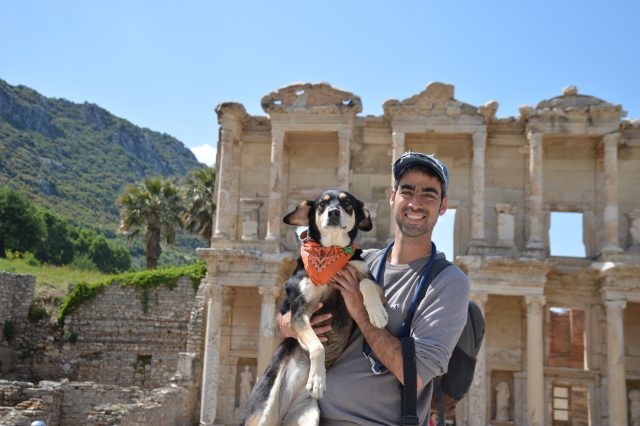
Although I have always been empathetic, open-minded, and tolerant of others and their beliefs and behaviors, traveling has further enriched and instilled these traits.I have also learned that it takes very little to be happy. A simple life without stress is exactly what we need, even if we don’t know it.
How do you afford to travel?
I live simply and spend very little by hitchhiking, staying in locals’ houses, camping, and even saving meals by dumpster diving. I have learned that I can travel the world without much in my pocket. That is the biggest trick to staying on the road, knowing how to save and still manage to spend very little.
I spend an average of 120-150 euros per month, including all my expenses.
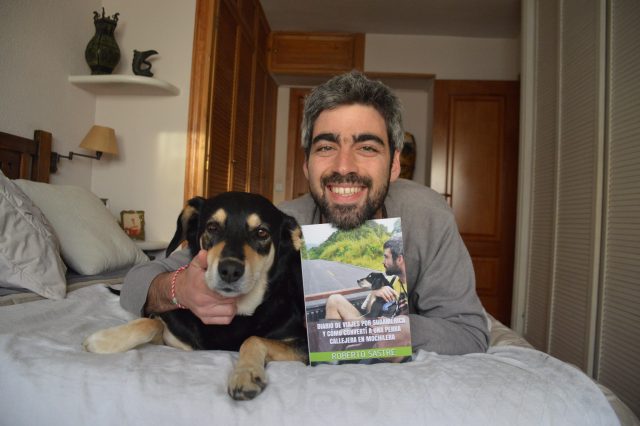
If I require an additional income, I will find temporary work locally and then I also earn an income from my book, Diario de viajes por Sudamérica y cómo convertí a una perra callejera en mochilera (a travel diary through South America and how I turned a street dog into a backpacker).
Any regrets?
Not being with my family to celebrate special occasions, and my biggest regret was being away when two of the most important people in my life died.
Tell us about your furry friends
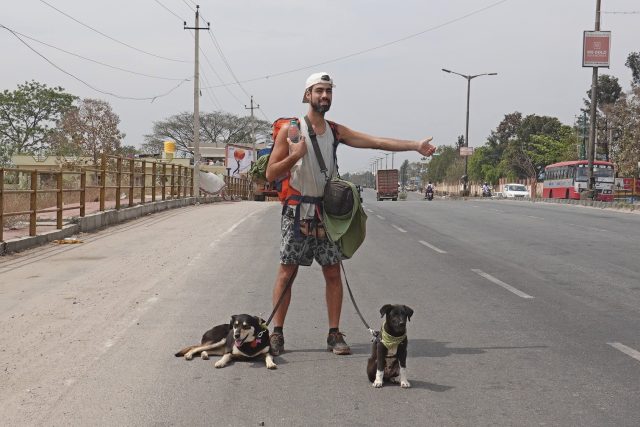
I have been traveling with Cocaí since 2014 and Chai since 2019.
I adopted Cocia (Coconut Acia) in a small Bolivian town straddling the Andes and the Amazonian jungle in June 2014 when she was just over a month old. On Christmas Eve of 2019, I adopted Chai from the Thar Desert, which divides Pakistan and India.
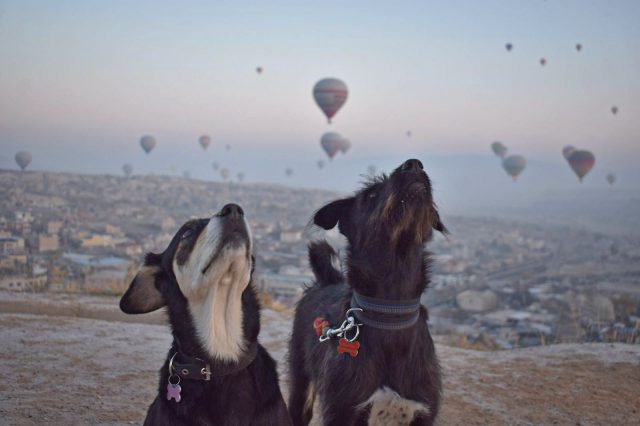
Cocai and Chai have completely different personalities and temperaments. Cocai is very intelligent, calm as a Buddhist monk in a meditational trance, and prefers quiet. She is, however, still adventurous and very protective of her clan. Chai is the lovable, playful, Tasmanian devil who is mischievous and chaotic and is always ready to act without thinking about the consequences.
What has surprised you the most about overland travel with a pet?
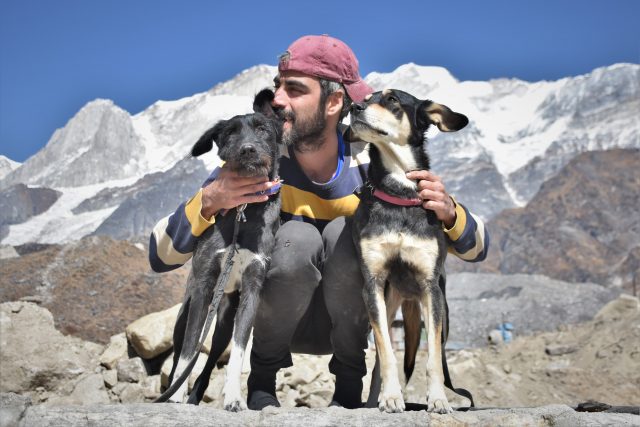
That it is not only possible but wonderful.
To be protected, loved, and happy and the mere act of sharing such an adventure with your dog. When I travel with Cocaí and Chai, I feel affection and unconditional love from them as if they are my children. I feel infinite joy when we manage to do something together and so much pride for having done it after hearing countless times that it couldn’t be done with a dog.
What challenges do you face on a day-to-day basis traveling with a pet?
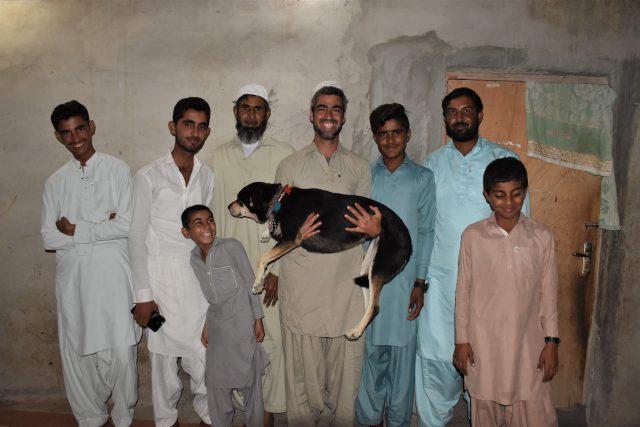
Granted that traveling with a pet is complicated, but as a backpacker, my challenges are two-fold with two dogs:
Transportation: If you don’t have your own vehicle or your backpacker budget does not allow you to rent a car, transportation is the greatest difficulty, as access to public transport is still very difficult in many countries. We hitchhike because we love it (we meet great people, have unique experiences, and manage to save money to continue traveling); thankfully, there are other options, such as shared cars or bikes.
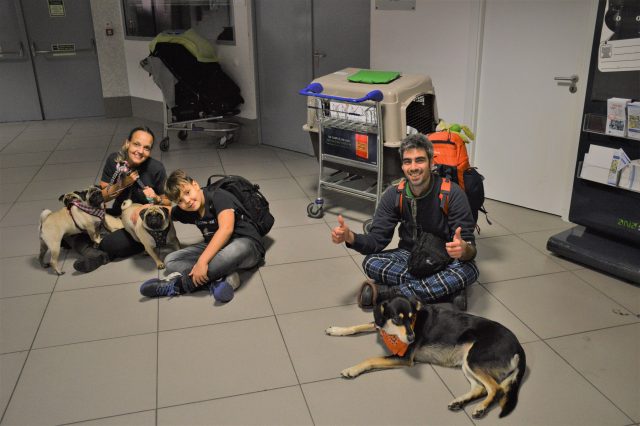
Accommodation: Say goodbye to staying in many, if not most, hostels. Couchsurfing, however, is an excellent option for backpackers. As we love nature and long hiking routes, we carry all the gear for camping. This gives us a certain amount of freedom and allows us to save money. It is also great in a pinch; if we cannot reach our destination, we can wild camp along the way.
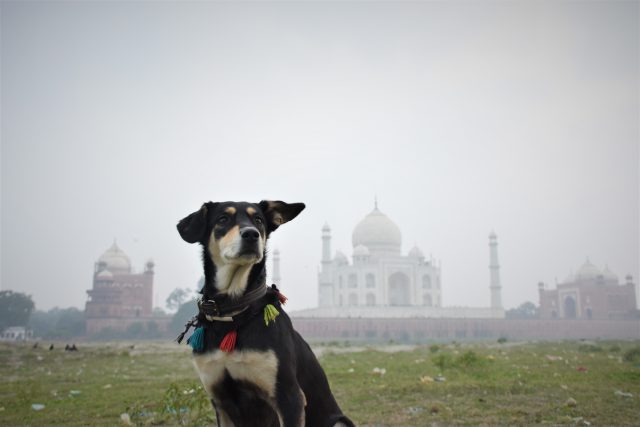
Visiting tourist sites: Dogs are not usually welcome in tourist sites such as museums, archaeological sites, etc.
The health of your dogs: The risk of your dog falling ill in a country with a limited veterinary infrastructure.
How have you been able to mitigate those challenges?
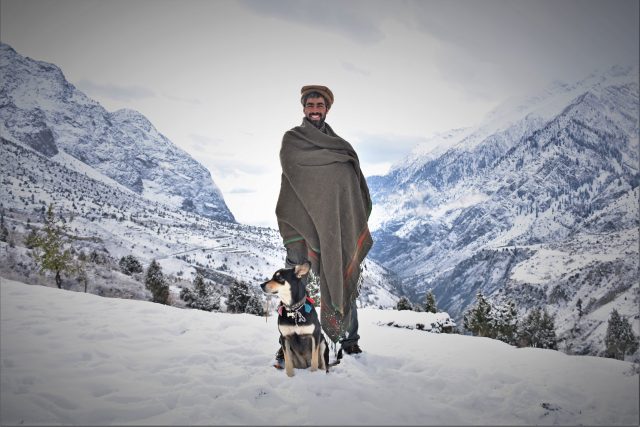
With patience, experience, and learning to look at the bright side of every challenge.
The same applies to accommodation. At times I would love to sleep in a bed or make friends in a hostel, but I can’t. In return, we wild camp in our tent, and it’s always quite an adventure.
How could industry or infrastructure be more accommodating to animal travelers?
If more people traveled with their four-legged friends, this would put pressure on the industry and, in turn, would make a positive change to the current trend. My favorite motto is, ‘Travel the world with your dog, don’t leave them at home’.
Are there any community resources that you rely on?

Couchsurfing is the one I have used the most to meet and stay in locals’ houses. I have also used Workaway to volunteer in exchange for room and board.
Do you support or promote any rescue organizations for animals?
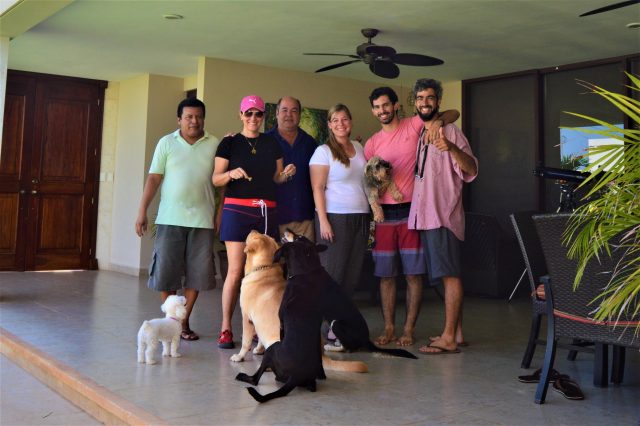
Yes, I support quite a few, both in Spain and abroad. I am going to mention three in Asia that are very special to me because I know them first-hand and I have collaborated with them:
Lucky Animal Protection Shelter (LAPS) based in Peshawar, Pakistan: The founder, Zeba Masood, has built this shelter in one of the most conservative areas of the country without the help of organizations of any kind and without the understanding of the citizens (and, of course, the government). Not only is it the only dog shelter in Peshawar city but in the entire province of Khyber Pakhtunkhwa. We are talking about an area where almost 40 million people live, so you can imagine the merit of the Lucky Animal Protection Shelter. Unfortunately, most people only adopt thoroughbred dogs, so with more than 150 dogs in their facilities, they now only make room for those with serious injuries or illnesses.
Facebook: Lucky Animal Protection Shelter – LAPS
Instagram: @lapskpK
Bark India Charitable Trust in Pondicheery, India: This organization collects sick and injured dogs, treats them, and then returns them to the same area they were collected from. The dogs must continue their life in their territory or location with their friends, the businesses they know where they can get food from, water resources, etc. In addition, Bark India is also trying to sterilize and vaccinate all the dogs in Pondicherry and raise animal awareness.
Facebook: Bark India Charitable Trust
Instagram: @bark_india
Shoon Dog Rescue in Yerevan, Armenia: This organization endeavors to save street animals in poor conditions and sterilize and vaccinate them.
Facebook: Shoon Dog Rescue
Instagram: @shoondogrescue
Any tips/tricks for traveling safely with pets?
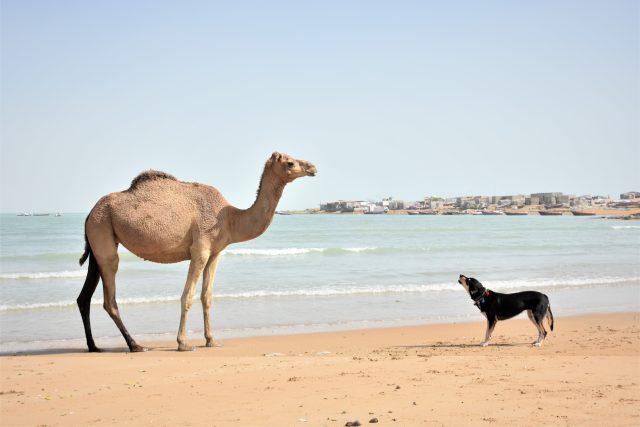
The truth is that I let them be. I give them a lot of freedom, and I trust them. I prefer to provide them with that freedom and see them happy than having them constantly on the leash.
However, for me, these three tips are vital when traveling with pets:
Periodic veterinary checks: It is vital to ensure that your dog is up to date with their vaccines, has been dewormed regularly, and is protected from fleas, ticks, and mosquitos. And I also try to bathe them from time to time and brush their teeth with natural soap.
Beware of street dogs: I love strays so much (both my dogs are strays), but they can become very territorial and dangerous when they run in packs. For instance, when I was touring India, I had to carry a stick or a stone and threaten them with it. Sadly, this works, which means they have already been threatened or even beaten in this way. If the situation is very extreme, it is best to turn around and look for an alternative path.Threatening them is enough. Please don’t throw anything at them unless it is strictly necessary.
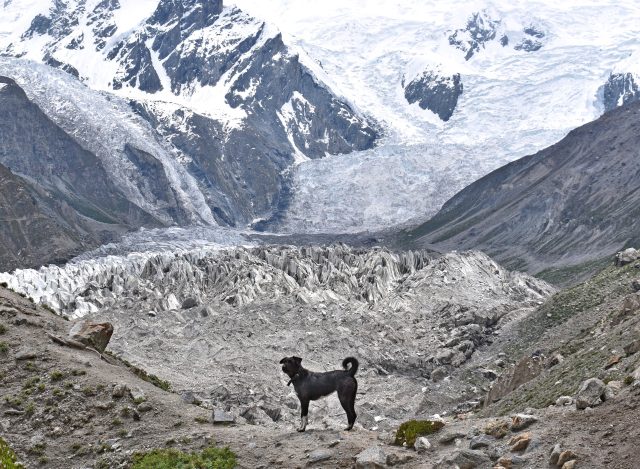
Plan your route according to the weather: Try to avoid places where it is freezing or especially hot. We already know that our dogs are affected by extreme temperatures more than humans.
Favorite piece of gear?
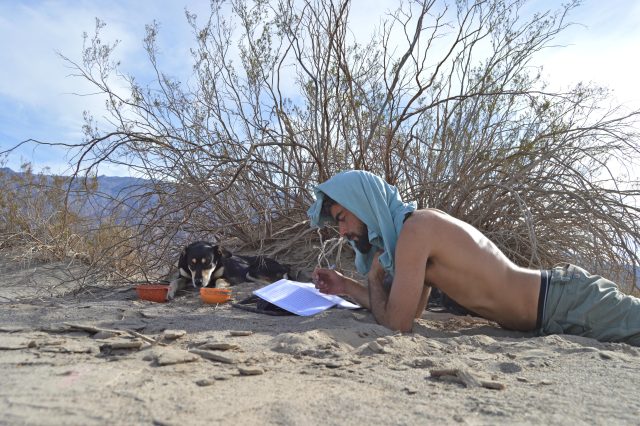
My heart is divided [among] my camping gear (my favorite moment of the day is when the three of us get in the tent at night), my camera, and my journal.
Most pet-friendly countries?

The USA and Canada are the most pet-friendly and easiest to travel to. To begin with, many accommodations (although expensive) are dog friendly, and in some areas, buses allow dogs (or at least turn a blind eye), not to mention all the dog-friendly businesses and people. Everyone in these countries seems to love dogs. When hitchhiking, I had been told countless times, ‘we stopped because of your dog.’ We spent a year in North America, and Cocai enjoyed the freedom to explore the forests and mountains without any issues.
I would also like to highlight Turkey. What an incredible surprise. The Turks may not be as crazy for dogs as other Western countries, but they are super tolerant and flexible to the extent that it’s rare to see dogs banned anywhere. This leaves Turkey as the most permissive country for dogs of all the countries we have visited.
Which countries are the least pet-friendly?
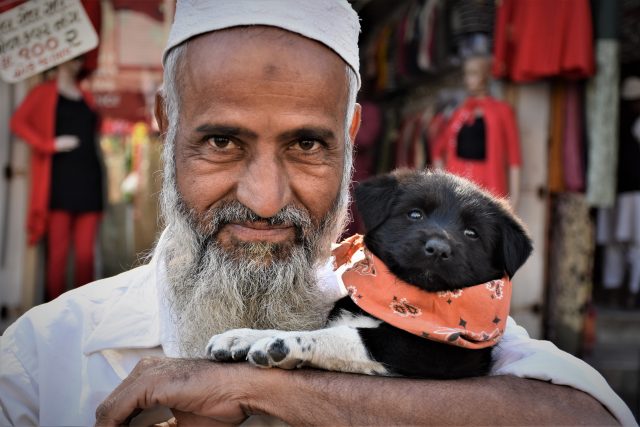
Probably Iran. It’s crazy, but it is the only country in the world where I have been kicked out of a park or square because I have a dog. It is challenging in big cities and conservative areas.
Unfortunately, they have a very religious and conservative government, and most pets are still not allowed in public places. Still, little by little, pet owners are gaining more rights, and certain areas allow your pet to be walked.
Do you travel with pet insurance, and have you had any incidents along the way?
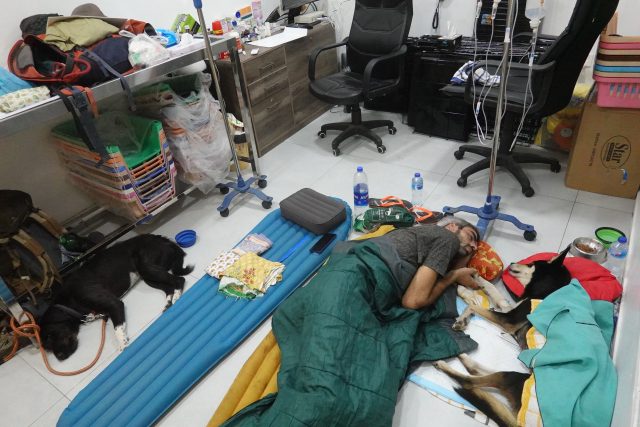
I do not travel with pet insurance. I believe it is a new concept and more geared toward the Western world.
I have only had one serious incident in Pakistan with Cocai. Her spleen burst (the cause was torsion of the spleen), and she had to have emergency surgery. Unfortunately, we were in a very remote location and traveled by taxi for 11 hours while Cocai was connected to an IV bag. The emergency surgery at night, including four days of hospitalization, postoperative care, tests, ultrasound, and medication, cost $400.
Having insurance, in this case, would not be of any assistance.
Any valuable information for other overlanders thinking of traveling with a pet?

Don’t overthink it. It’s already stressful to overland, and it is human nature to be hesitant to travel with a dog, which will add to your stress levels, but once you take the initial step, you realize that it is possible. To share that adventure with your furry friend—the mountains, rivers, lakes, beaches, jungles, deserts, towns, and cities is far more satisfying in the company of your pet. With a pet, you tend to meet more travelers and, above all, local people. Trust me, you won’t regret it.
Please don’t leave them at home.
Any specific gear you travel with?
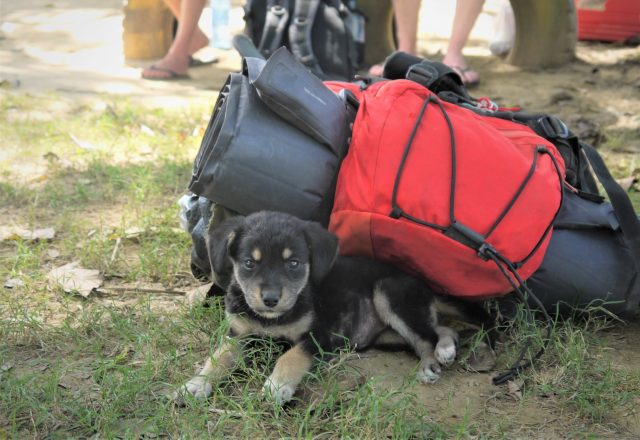
I carry the standard gear that a backpacker might travel with, such as camping and cooking gear, a laptop, and photography equipment. Still, more importantly, I travel with additional gear such as dog food, bowls, some medicine for the dogs, and their toothbrush.
Social media:
Instagram: @viajerosperrunos
Facebook: Viajeros Perrunos
YouTube: Viajeros Perrunos
Website/blog: viajerosperrunos.com
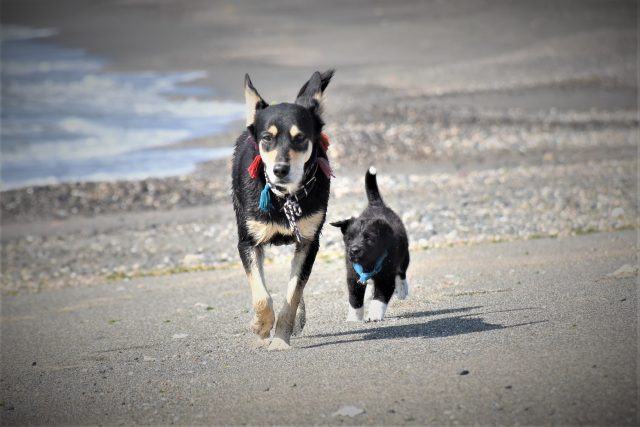
Our No Compromise Clause: We carefully screen all contributors to ensure they are independent and impartial. We never have and never will accept advertorial, and we do not allow advertising to influence our product or destination reviews.


